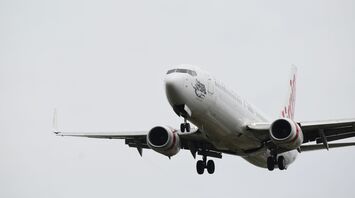Virgin Australia Boeing 737 Diverted Due to Engine Fire

Australia-bound passengers on a Virgin Australia flight departing from Queenstown International Airport (ZQN) experienced a harrowing incident when the aircraft encountered a bird strike on departure, leading to reports of flames seen emanating from the engine. The flight, VA148, was subsequently diverted to Invercargill Airport, where it landed safely without any reported injuries.
The Melbourne-bound Boeing 737 NG, with registration VH-YIV and serial number 40698, is a ten-year-old aircraft that departed from the scenic and challenging Queenstown at 17:59, just ahead of its scheduled departure time. Shortly after takeoff, the aircraft encountered the bird strike, prompting an immediate diversion to Invercargill, a typical alternative airport for such emergencies due to its calm conditions and long runway.
Onlookers on the ground reported hearing loud noises during the aircraft's ascent, which were likely caused by the birds impacting the engines. Passengers took to social media to share their experiences, noting the aircraft circling over Bluff before approaching Invercargill. The flight landed at Invercargill 50 minutes after takeoff, with the captain informing passengers about the bird strike and maintaining clear communication throughout the incident. The rescheduled departure from Invercargill was set for 20:00, with an expected arrival in Melbourne at 21:35 local time.
Virgin Australia's Chief Operations Officer, Stuart Aggs, issued a statement confirming the diversion due to a possible bird strike and emphasizing the safety of passengers and crew as the airline's highest priority. Emergency services met the aircraft upon landing at Invercargill to ensure all safety protocols were followed.
The aircraft involved, a Boeing 737 NG, first entered service with Virgin Australia in August 2013. It is configured to accommodate eight business class and 168 economy class passengers. Initial reports indicated that there were 73 passengers on board at the time of the incident.
Bird strikes remain a significant threat to aviation safety, with potential consequences ranging from engine damage to complete loss of power. One of the most notable bird strike incidents involved US Airways Flight 1549, which famously landed in the Hudson River after losing power in both engines.
This incident underscores the importance of rigorous safety measures and quick decision-making in ensuring the well-being of passengers and crew during in-flight emergencies.



















